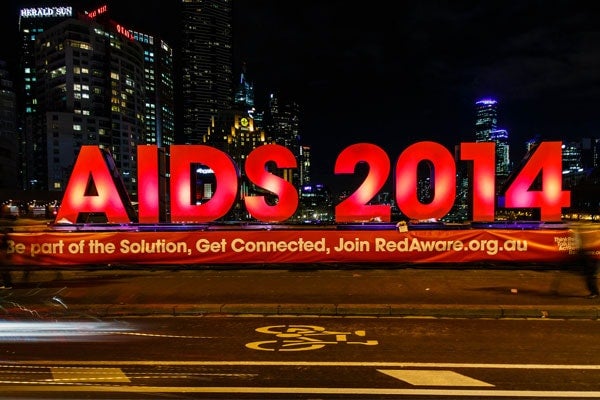
With HIV rates at a 20-year high, AIDS researchers discuss next steps
Published: September 15, 2014
The scientists and activists who lead the world’s efforts to defeat one of the great medical scourges of our time met recently in Melbourne – among them three professors from the University of Toronto’s Factor-Inwentash Faculty of Social Work.
When the 20th International AIDS conference began, the deaths of delegates aboard a Malaysian plane destroyed over Ukraine dominated the headlines. But even as scholars, politicians and community leaders mourned the loss of those colleagues, researchers shared their findings − and media took up the task of reporting on important trends and discoveries.
U of T’s Carmen Logie presented research that focused on the devastating HIV infection rate among women particularly those who face varying types of marginalization and abuse.
 “I feel the global focus on women and AIDS mainly looks at maternal health and perinatal transmission, which of course is extremely important,” says Professor Logie (pictured at left).
“I feel the global focus on women and AIDS mainly looks at maternal health and perinatal transmission, which of course is extremely important,” says Professor Logie (pictured at left).
“But other groups like sex workers, transgender women and sexual minority women often face social and structural risk factors and discrimination that are overlooked.”
Logie discussed the plight of internally-displaced women in Leogane, Haiti and their experience with intimate partner violence. (Internally-displaced persons are those who have fled their homes, often due to natural disasters or political upheaval, yet, unlike refugees, remain within their own country.)
She selected Haiti because of its soaring HIV infection rate – the highest in the Western hemisphere.
Logie's research concluded that poverty reduction was key to empowering displaced women in Leogane, and community mobilization also provided them with tools they needed to promote safety and well-being. (Read more about Logie’s work in Haiti.)
Professor Peter A. Newman delivered several presentations and took part in a meeting as a member of the international psychosocial studies group of the “Towards an HIV Cure” initiative.
“It is crucial to engage the perspectives of community stakeholders, including key populations at risk for HIV and people living with HIV, to address thorny social and ethical challenges of HIV cure research,” says Newman, who is a Canada Research Chair in Health and Social Justice.
That includes addressing concerns that research into a cure for HIV might take resources away from prevention, Newman says, and “exploring the tremendous social and behavioural implications of an HIV cure” such as who will have access.
(Read more about Newman and the complications that accompany an AIDS vaccine.)
For Professor David Brennan, the conference offered a chance to discuss his research that focuses on the role of masculinity in the relationships of gay and bisexual men of colour.
Sexual roles tend to be perceived in relation to gender norms with the more effeminate men being assumed to be the receptive partner, Brennan says. Brennan wanted to know whether men associate masculinity with being the insertive partner and whether that mindset affects their use of protection.
“We found that insertive partners who associate their roles with their masculinity were less likely to report using condoms,” says Brennan. “But what was more interesting was that perceptions based on gender roles often do not line up with reality and therefore assumptions about sexual behaviour and sexual risk are not always accurate.”
(Read more about Professor’s Brennan’s research.)
Michael Kennedy writes about health and wellness for U of T News.


